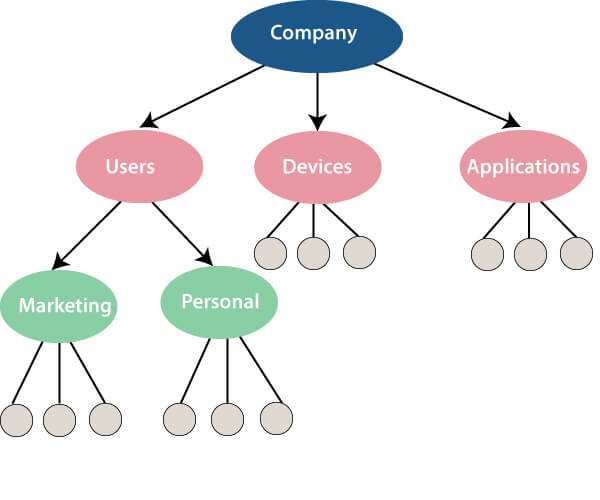TheDeveloperBlog.com
C-Sharp | Java | Python | Swift | GO | WPF | Ruby | Scala | F# | JavaScript | SQL | PHP | Angular | HTML
What is Database
What is database with DBMS Overview, DBMS vs Files System, DBMS Architecture, Three schema Architecture, DBMS Language, DBMS Keys, DBMS Generalization, DBMS Specialization, Relational Model concept, SQL Introduction, Advantage of SQL, DBMS Normalization, Functional Dependency, DBMS Schedule, Concurrency Control etc.
DatabaseWhat is Data?
Data is a collection of a distinct small unit of information. It can be used in a variety of forms like text, numbers, media, bytes, etc. it can be stored in pieces of paper or electronic memory, etc. Word 'Data' is originated from the word 'datum' that means 'single piece of information.' It is plural of the word datum. In computing, Data is information that can be translated into a form for efficient movement and processing. Data is interchangeable. What is Database?
A database is an organized collection of data, so that it can be easily accessed and managed. You can organize data into tables, rows, columns, and index it to make it easier to find relevant information. Database handlers create a database in such a way that only one set of software program provides access of data to all the users. The main purpose of the database is to operate a large amount of information by storing, retrieving, and managing data. There are many dynamic websites on the World Wide Web nowadays which are handled through databases. For example, a model that checks the availability of rooms in a hotel. It is an example of a dynamic website that uses a database. There are many databases available like MySQL, Sybase, Oracle, MongoDB, Informix, PostgreSQL, SQL Server, etc. Modern databases are managed by the database management system (DBMS). SQL or Structured Query Language is used to operate on the data stored in a database. SQL depends on relational algebra and tuple relational calculus. A cylindrical structure is used to display the image of a database. 
Evolution of Databases
The database has completed more than 50 years of journey of its evolution from flat-file system to relational and objects relational systems. It has gone through several generations. The EvolutionFile-Based1968 was the year when File-Based database were introduced. In file-based databases, data was maintained in a flat file. Though files have many advantages, there are several limitations. One of the major advantages is that the file system has various access methods, e.g., sequential, indexed, and random. It requires extensive programming in a third-generation language such as COBOL, BASIC. Hierarchical Data Model1968-1980 was the era of the Hierarchical Database. Prominent hierarchical database model was IBM's first DBMS. It was called IMS (Information Management System). In this model, files are related in a parent/child manner. Below diagram represents Hierarchical Data Model. Small circle represents objects. 
Like file system, this model also had some limitations like complex implementation, lack structural independence, can't easily handle a many-many relationship, etc. Network data modelCharles Bachman developed the first DBMS at Honeywell called Integrated Data Store (IDS). It was developed in the early 1960s, but it was standardized in 1971 by the CODASYL group (Conference on Data Systems Languages). In this model, files are related as owners and members, like to the common network model. Network data model identified the following components:
This model also had some limitations like system complexity and difficult to design and maintain. Relational Database1970 - Present: It is the era of Relational Database and Database Management. In 1970, the relational model was proposed by E.F. Codd. Relational database model has two main terminologies called instance and schema. The instance is a table with rows or columns Schema specifies the structure like name of the relation, type of each column and name. This model uses some mathematical concept like set theory and predicate logic. The first internet database application had been created in 1995. During the era of the relational database, many more models had introduced like object-oriented model, object-relational model, etc. Cloud databaseCloud database facilitates you to store, manage, and retrieve their structured, unstructured data via a cloud platform. This data is accessible over the Internet. Cloud databases are also called a database as service (DBaaS) because they are offered as a managed service. Some best cloud options are:
Advantages of cloud database Lower costs Generally, company provider does not have to invest in databases. It can maintain and support one or more data centers. Automated Cloud databases are enriched with a variety of automated processes such as recovery, failover, and auto-scaling. Increased accessibility You can access your cloud-based database from any location, anytime. All you need is just an internet connection. NoSQL DatabaseA NoSQL database is an approach to design such databases that can accommodate a wide variety of data models. NoSQL stands for "not only SQL." It is an alternative to traditional relational databases in which data is placed in tables, and data schema is perfectly designed before the database is built. NoSQL databases are useful for a large set of distributed data. Some examples of NoSQL database system with their category are:
Advantage of NoSQLHigh Scalability NoSQL can handle an extensive amount of data because of scalability. If the data grows, NoSQL database scale it to handle that data in an efficient manner. High Availability NoSQL supports auto replication. Auto replication makes it highly available because, in case of any failure, data replicates itself to the previous consistent state. Disadvantage of NoSQLOpen source NoSQL is an open-source database, so there is no reliable standard for NoSQL yet. Management challenge Data management in NoSQL is much more complicated than relational databases. It is very challenging to install and even more hectic to manage daily. GUI is not available GUI tools for NoSQL database are not easily available in the market. Backup Backup is a great weak point for NoSQL databases. Some databases, like MongoDB, have no powerful approaches for data backup. The Object-Oriented DatabasesThe object-oriented databases contain data in the form of object and classes. Objects are the real-world entity, and types are the collection of objects. An object-oriented database is a combination of relational model features with objects oriented principles. It is an alternative implementation to that of the relational model. Object-oriented databases hold the rules of object-oriented programming. An object-oriented database management system is a hybrid application. The object-oriented database model contains the following properties. Object-oriented programming properties
Relational database properties
Graph DatabasesA graph database is a NoSQL database. It is a graphical representation of data. It contains nodes and edges. A node represents an entity, and each edge represents a relationship between two edges. Every node in a graph database represents a unique identifier. Graph databases are beneficial for searching the relationship between data because they highlight the relationship between relevant data. 
Graph databases are very useful when the database contains a complex relationship and dynamic schema. It is mostly used in supply chain management, identifying the source of IP telephony. DBMS (Data Base Management System)Database management System is software which is used to store and retrieve the database. For example, Oracle, MySQL, etc.; these are some popular DBMS tools.
Advantage of DBMSControls redundancy It stores all the data in a single database file, so it can control data redundancy. Data sharing An authorized user can share the data among multiple users. Backup It providesBackup and recovery subsystem. This recovery system creates automatic data from system failure and restores data if required. Multiple user interfaces It provides a different type of user interfaces like GUI, application interfaces. Disadvantage of DBMSSize It occupies large disk space and large memory to run efficiently. Cost DBMS requires a high-speed data processor and larger memory to run DBMS software, so it is costly. Complexity DBMS creates additional complexity and requirements. RDBMS (Relational Database Management System)The word RDBMS is termed as 'Relational Database Management System.' It is represented as a table that contains rows and column. RDBMS is based on the Relational model; it was introduced by E. F. Codd. A relational database contains the following components:
An RDBMS is a tabular DBMS that maintains the security, integrity, accuracy, and consistency of the data.
Next TopicTypes of Databases
|
Related Links:
- What is Database
- What is Hadoop: Architecture, Modules, Advantages, History
- What is HTML
- What is Oracle
- What is GitHub
- What is Big Data
- What is HBase
- What is Hive
- What is RDBMS
- What is Pig
- What is Sqoop
- What is PowerShell cmdlet


